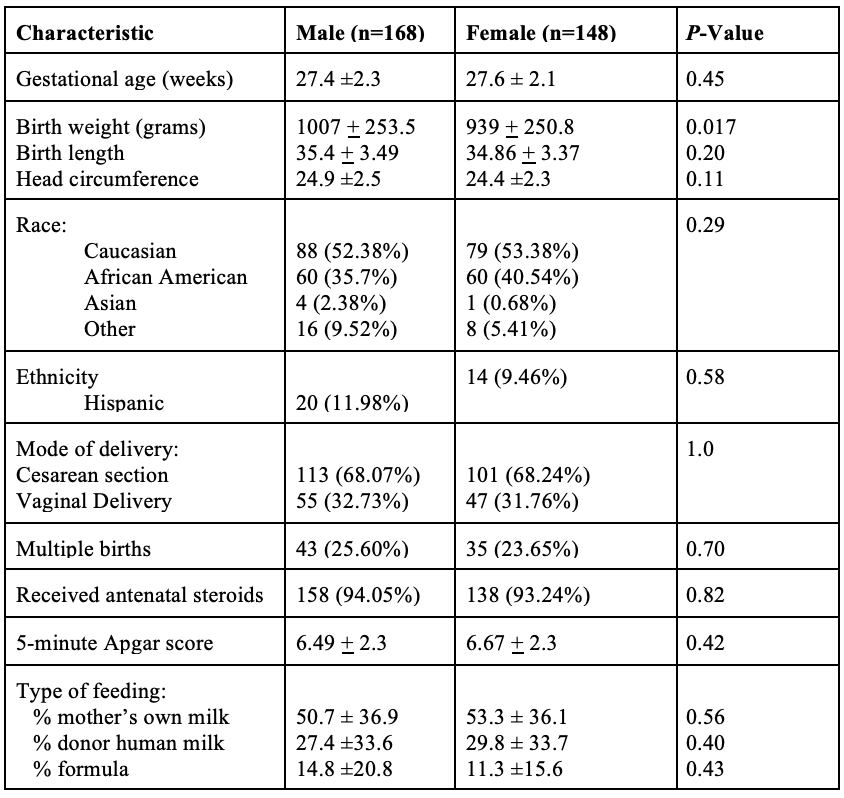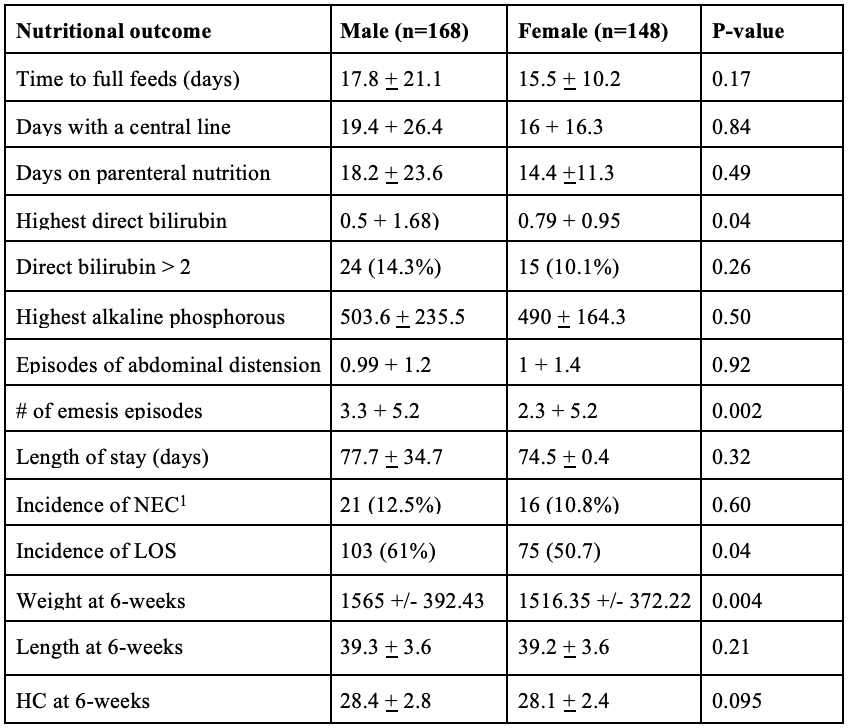Neonatal General
Category: Abstract Submission
Neonatology General 1: GI - Growth - Nutrition
269 - Sex-Specific Nutritional Outcomes in Very Low Birth Weight Infants Over the First Six Weeks of Life
Friday, April 22, 2022
6:15 PM - 8:45 PM US MT
Poster Number: 269
Publication Number: 269.131
Publication Number: 269.131
Lauren V. Cervantes, University of Florida College of Nursing, Gainesville, FL, United States; Alissandre Eugene, University of Florida College of Nursing, Gainesville, FL, United States; Michael Weaver, University of Florida College of Nursing, Gainesville, FL, United States; Josef Neu, University of Florida, Gainesville, FL, United States; Diomel de la Cruz, University of Florida College of Medicine, Gainesville, FL, United States; Leslie Parker, University of Florida College of Medicine, Gainesville, FL, United States

Lauren V. Cervantes, Bachelor's of Science
Research Assistant
University of Florida College of Nursing
Gainesville, Florida, United States
Presenting Author(s)
Background:
Providing optimal nutrition for adequate growth and development in preterm very low birth weight (VLBW) infants is challenging. While sex-specific differences exist regarding nutritional requirements and growth in term infants, sex-specific nutritional strategies are rarely considered when providing nutrition to VLBW infants.
Objective: The purpose of this study is to determine whether differences in nutritional outcomes exist between female and male VLBW infants.
Design/Methods:
This secondary analysis of data from two large National Institute of Health-funded randomized controlled trials included a total of 316 VLBW infants less than 32 weeks gestation with a birth weight less than 1500 grams. Information regarding nutritional outcomes was obtained from the electronic medical records and compared between sexes using either chi-square or nonparametric Wilcoxon rank sums test as appropriate.
Results:
Baseline characteristics were similar between groups, except males weighed more at birth (1007g vs. 939g; p=0.017) (Table 1). Male infants experienced more episodes of emesis (3.3 vs. 2.3; p=0.002) and were more likely to be diagnosed with late-onset sepsis (33% vs. 23.8%; p=0.04) while females had higher direct bilirubin levels (0.79 vs. 0.5; p=0.04). While not statistically significant, male infants required over 3 additional days to reach full feedings (17.8 vs. 15.5; p=0.17) and required a central line 3 more days than females (19.4 vs. 16; p=0.84) which may be clinically significant in this vulnerable population of infants (Table 2). Finally, while the weight at 6 weeks was higher in males (1565g vs. 1516g; p=0.004), there were no differences in growth velocities (mg/kg/d) over the first six weeks of life (Figure 1).
Conclusion(s):
Sex-specific differences in nutritional outcomes may exist in VLBW infants and should be considered when providing nutritional support to infants in the NICU. Future research is needed to determine the effect of sex-related nutritional therapy on health and nutritional outcomes among preterm VLBW infants.
Table 1: Baseline Characteristics of the Infants, providing mean (SD) or frequency (%) n=316
Table 2: Nutritional Outcomes, providing mean (SD) or frequency (%) n=316 NEC=necrotizing enterocolitis; LOS = late onset sepsis; HC = head circumference
NEC=necrotizing enterocolitis; LOS = late onset sepsis; HC = head circumference
Providing optimal nutrition for adequate growth and development in preterm very low birth weight (VLBW) infants is challenging. While sex-specific differences exist regarding nutritional requirements and growth in term infants, sex-specific nutritional strategies are rarely considered when providing nutrition to VLBW infants.
Objective: The purpose of this study is to determine whether differences in nutritional outcomes exist between female and male VLBW infants.
Design/Methods:
This secondary analysis of data from two large National Institute of Health-funded randomized controlled trials included a total of 316 VLBW infants less than 32 weeks gestation with a birth weight less than 1500 grams. Information regarding nutritional outcomes was obtained from the electronic medical records and compared between sexes using either chi-square or nonparametric Wilcoxon rank sums test as appropriate.
Results:
Baseline characteristics were similar between groups, except males weighed more at birth (1007g vs. 939g; p=0.017) (Table 1). Male infants experienced more episodes of emesis (3.3 vs. 2.3; p=0.002) and were more likely to be diagnosed with late-onset sepsis (33% vs. 23.8%; p=0.04) while females had higher direct bilirubin levels (0.79 vs. 0.5; p=0.04). While not statistically significant, male infants required over 3 additional days to reach full feedings (17.8 vs. 15.5; p=0.17) and required a central line 3 more days than females (19.4 vs. 16; p=0.84) which may be clinically significant in this vulnerable population of infants (Table 2). Finally, while the weight at 6 weeks was higher in males (1565g vs. 1516g; p=0.004), there were no differences in growth velocities (mg/kg/d) over the first six weeks of life (Figure 1).
Conclusion(s):
Sex-specific differences in nutritional outcomes may exist in VLBW infants and should be considered when providing nutritional support to infants in the NICU. Future research is needed to determine the effect of sex-related nutritional therapy on health and nutritional outcomes among preterm VLBW infants.
Table 1: Baseline Characteristics of the Infants, providing mean (SD) or frequency (%) n=316

Table 2: Nutritional Outcomes, providing mean (SD) or frequency (%) n=316
 NEC=necrotizing enterocolitis; LOS = late onset sepsis; HC = head circumference
NEC=necrotizing enterocolitis; LOS = late onset sepsis; HC = head circumference